-13 F. low temperature Tuesday morning.
-31 F. record low set on December 24, 1872.
11 F. high in the Twin Cities Tuesday.
25 F. average high on December 24.
18 F. high on December 24, 2012.
Minnesota Weather History on Christmas Eve. Source: Twin Cities National Weather Service.
1999:
Strong winds resulted in a one hundred thirty foot radio tower to
collapse in Milaca. No wind measurements were available in the city of
Milaca. However, Princeton airport (Mille Lacs county), had a gust to 45
mph at 10:35 pm CST. St. Cloud airport (Stearns County), had a gust to
44 mph at 8:52 pm CST. Mora (Kanabec county) had a gust to 55 mph at
9:35 pm CST, and a gust to 47 mph at 10:35 pm CST.
1996:
A strong low pressure system which deposited heavy snow over much of
Minnesota on the 23rd, pulled extremely cold Canadian air southward over
Minnesota. The cold remained entrenched through the 26th. Temperatures
fell to 15 to 35 degrees below zero Christmas Day morning. The Twin
Cities and St. Cloud set new record low temperatures both days. In
addition, the high temperature on Christmas Day in the Twin Cities was
only 9 degrees below zero. Combined with the record low temperature that
morning of 22 below, the mean temperature for Christmas Day was 16
degrees below zero. This Christmas Day set a new record for being the
coldest day on record for the Twin Cities metro area, going back to the
year 1890 when modern day records began.
1922: People were golfing in the Twin Cities as temperatures reached the 50's.
Your Big Gift
I'm
stepping off the consumerism-treadmill this year. Why? More megapixels
and gigabytes won't make me any happier; technology that's obsolete when
I walk out of the store.
In the end all this "stuff" won't matter
much. The magic of Christmas? The most precious gifts are staring us in
the face: the hustle & bustle of gloriously inconvenient friends
& family camped out under the tree.
No ties, socks or
shiny-red Dopplers this year. Experiences trump things. Turn off your
Facebook and surprise me with some face-time. Quality time with your
(real) social network is the biggest gift of all.
Although, come to think of it, monogrammed snowshoes might make a lovely gift this year.
Last
night's snowy burst has freshened up our Winter Wonderland; no more
accumulating snow is in sight into the weekend. 20s will feel like sweet
relief today; 30s likely Saturday before Canada sends a series of
sweet, Yukon treats south of the border next week. Unnecessary chill
spills over into the first week of 2014, but I see evidence of slight
moderation by week two. Old Man Winter may take his foot off the gas
within a few weeks.
Until then think warm thoughts and have a blessed Christmas.
Christmas Eve Snowfall Amounts. Much of the metro picked up 1-2", with a band of 3-4" over the far northern suburbs. The latest amounts from NOAA
here.
Christmas Conjunction In Space.
Was the Star of Bethlehem a conjunction of planets? Interesting timing
with a new conjunction visible, this one from a satellite on the other
side of the sun, as reported by
spaceweather.com: "
According to some scholars, the Star of Bethlehem
might have been a close encounter between Venus and Jupiter. The two
brightest planets in the night sky, merged, would have made a spectacle
of Biblical proportions. This Christmas, NASA's STEREO-B probe is
observing a conjunction of three planets--Venus, Earth and Jupiter..."
Snowier Than Average Christmas Day.
The 10-year average for percentage of the Lower 48 states with 1" or
more of snow on the ground is 39% This year: closer to 44% It would have
been higher but last weekend's freak, solstice storm pulled record
warmth unusually far north, melting a lot of snow. In today's
Climate Matters
we take a look at December temperatures around the USA, and which parts
of the nation are ending with a moisture surplus or deficit: "
WeatherNationTV
Chief Meteorologist Paul Douglas shows just how low the mercury dipped
in the northern states early Christmas Eve morning. And on the eastern
seaboard they saw record highs? Talk about weather whiplash. How much of
the United States will see a white Christmas? Turns out we're above
average. The west is seeing one of its driest years on record while the
eastern half of the nation is getting soaking rains. Merry Christmas!"
84 Hour Snowfall.
The streak of 1-3" over Minnesota and Wisconsin fell late yesterday and
last night. Any subsequent snow into midnight Friday night will be
mostly lake effect snow falling downwind of the Great Lakes. Map: NOAA
and Ham Weather.
Chilly Spell.
Character-building cold pushes across the Upper Midwest and Great
Lakes, the 32-degree isotherm (solid red line) reaching as far south as
the Florida Panhandle and New Orleans. 84 hour 2-meter temperatures:
NOAA's NAM model and Ham Weather.
Late Week Thaw - More Arctic Exhaust Next Week.
20s will feel pretty good today; ECMWF guidance hinting at 30 Friday
and low 30s Saturday before taking another swan-dive off a temperature
cliff by Monday. Graph: Weatherspark.
Slight Moderation Early January?
I want to see a few more GFS model runs, but I'm seeing a slight
warming trend for the first week of January. A far cry from a January
Thaw, but teens and 20s, with fewer blasts of numbing, subzero air.

New Cameras Aid Snowflake Research. Here's an excerpt of a fascinating article from The Salt Lake Tribune and
The Register Guard: "
They
say every snowflake is unique. University of Utah researchers test that
theory every time it snows at Alta Ski Area in Little Cottonwood
Canyon. Multi-Angle Snowflake Cameras — constructed at the university
and now being provided to other weather-related researchers — placed at
Alta automatically kick on when snow starts to fall and record images
until it stops. “Since April of 2011 we have obtained views of
snowflakes that I don’t think have ever been seen before,” said Tim
Garrett, a professor in the department of atmospheric sciences and lead
researcher in the project. “We are seeing things that really are new and
exciting. We are opening up scientific questions that we had not
thought about before...”
* The site referenced above is
here.
Illinois Tornado Survivors Say "It Never Goes Away".
This story, more than most I've read recently, captures the emotional
and psychological toll of tornadoes and other forms of extreme,
life-threatening weather. Here's an excerpt from
NBC Chicago: "...
So
when you have those dark moments, those bad times, you're going to
sense you're stuck in this morass, and that's when it's going to seem
like it's worse. Then it's going to start up again." Now, the bad. "It
never goes away. ... They'll never heal," said Bobbe Marion, who in 1990
survived the most violent tornado to strike the Chicago metropolitan
area. "They're going to do the same thing we do. It gets nasty outside,
and they're going to be afraid. "How do you explain to a kid what
happened? Your house is here one minute, and you come back and now the
house is gone, and maybe the dog is gone, and all your toys are gone..." (File photo from November 17m, 2013 EF-4 tornado in Washington, Illinois: Chicago Tribune).

NASA Builds GPS-Based System For Detecting Natural Disasters. It's all about the resolution and timeliness (latency) of raw data, and what you do with it. Here's a clip from
allvoices.com: "...
Forecasters
at NOAA National Weather Service offices in Oxnard and San Diego,
California demonstrated the new technology in July, using it to track a
summer monsoon rain affecting Southern California and issue more
accurate and timely flash flood warnings. The new technology uses
real-time information from GPS stations that have been upgraded with
small, inexpensive seismic and meteorological sensors. Other real-world
systems are integrating the new technology as well. For example, it is
being used to make damage assessments for hospitals, bridges and other
critical infrastructure that can be used in real time by emergency
personnel, decision makers and first responders to help mitigate threats
to public safety..."
Heavy Pollution Enshrouds Northern China Including Capital. Bloomberg has an update on the record levels of smog gripping China - here's the intro to a recent story: "
Heavy pollution enveloped northern and central China
today, prompting warnings for people to stay indoors as smog levels in
some areas exceeded World Health Organization-recommended levels by 30
times. The concentration of PM2.5, fine air particulates that pose the
greatest health risk, was 421 micrograms per cubic meter at 2 p.m. near
Tiananmen Square in Beijing, compared with an average of 228 over the
past 24 hours, the Beijing Municipal Environmental Monitoring Center
said on its website. Levels of PM2.5 hit 795 in Xi’an and 740 in
Zhengzhou. The WHO recommends 24-hour exposure to PM2.5 concentrations
no higher than 25 micrograms per cubic meter..."
Photo credit above: "
A
tourist wearing a protective mask looks at buildings at the Bund under
heavy haze in Shanghai, China, Friday, Dec. 20, 2013. Shanghai’s
environmental protection bureau issued a “yellow” pollution warning this
afternoon and said it was taking “emergency emission reduction”
measures and recommended that children, the elderly and people suffering
from heart disease or lung disease should stay indoors and cease
outdoor exercises." (AP Photo/Eugene Hoshiko).
 The 5 Top U.S. Weather Stories Of 2013
The 5 Top U.S. Weather Stories Of 2013. Here's an excerpt of a list compiled by
The Capital Weather Gang that (in my humble opinion) has the right idea: "
In
the United States, the major weather stories of 2013 are somewhat
contradictory. One the one hand, several horrible weather events
occurred, from violent tornadoes in Oklahoma to record wildfires in the
West to “biblical flooding”
in Colorado. But the year also brought the fewest tornadoes in recent
memory and a largely absent Atlantic hurricane season. Overall, 2013 is
likely to finish with 8 billion dollar weather disasters in the U.S., down from 11 in 2012 and 13 in 2011 but up from the 4 in 2010 and 6 in 2009. Here are my selections for 5 biggest weather events of 2013 in the United States, presented in no particular order..."
Photo credit above: "
Tornado passes across south Oklahoma City, Monday, May 20, 2013." (AP Photo/The Oklahoman, Paul Hellstern).
Dried Up And Maxed Out - California Tries To Make It Snow.
2013 has been the driest year on record for the state of California.
Will cloud seeding help to squeeze out a few more inches over the Sierra
Nevada?
Governing.com has an interesting article; here's an excerpt: "...
Cloud
seeding has been around for almost 70 years now, since Vincent
Schaefer, a self-taught chemist, dumped six pounds of dry ice into the
clouds over the Berkshire Mountains in Massachusetts in 1946, making
them snow. The experiment led to speculation that cloud seeding could
fight drought, control storms, reduce hail and quench forest fires.
Indeed, today about 10 states, mostly in the West, have cloud-seeding
operations to combat such conditions. In Arizona, California, Colorado,
Idaho, Nevada, Utah and Wyoming, cloud-seeders are hired to increase the
snowpack. In Kansas and Texas, they work to induce rain, and in North
Dakota, they induce rain before the clouds can produce crop-damaging
hail..."
Photo credit:
Flickr/PrayItNoPhotography.
A Moonlit Shield Of Clouds, As Seen From Space. Here's a snippet of an interesting image and explanation from
discovermagazine.com: "
On
Dec. 18th, 2013, an almost full moon enabled the Suomi NPP satellite to
capture this unusual visible-light image of a spectacular cloud
formation along the eastern slope of the Rocky Mountains in Colorado and
Wyoming. You can tell it’s nighttime from the points of light that are
most clearly visible in the right portion of the image. These are towns
out on the high plains of Nebraska and Kansas. The white stuff that
seems to streak off the mountaintops comprise what’s known as orographic
cirrus clouds..."
Image credit above: "
An orographic
cirrus cloud formation on the eastern side of the Rocky Mountains, as
seen at night by the Suomi NPP satellite on 12/18/13." (Source: CIMSS Satellite Blog).
Snow: Every Budgeters Worst Nightmare. Keeping roads clear of snow and ice is non-trivial, and expensive. Here's a clip from an article at
Governing Magazine: "...
Predicting
just how much a local government will need to spend for the upcoming
winter is only a best guess. Costs vary widely from year to year,
depending not only on the severity of the weather, but where on the
calendar storms fall and even the time of day a storm hits. The city of
Minneapolis attempts to project its snow and ice removal costs by
looking at averages over the previous three to five years. For fiscal
year 2013, the city budgeted about $10 million. In recent years, though,
the total bill has ranged from slightly more than $7 million all the
way up to $12 million. “We try and budget for an average year,” says
Deputy Public Works Director Heidi Hamilton. “But there’s never an
average year...” (photo credit: Jessica Hill, AP).
Weather Effects On The Patterns Of People's Everyday Activities: A Study Using GPS-Traces Of Mobile Phone Users.
Hey, you could have just asked the NSA, right? Here's a clip from an
interesting study that uses cellular data to track how changes in
weather affect our behavior and movement - derived from the records of
31,855 mobile phone users, courtesy of
PLOS ONE: "...
Our
analysis of 31,855 mobile phone users allowed us to infer that people
were more likely to stay longer at eateries or food outlets, and (to a
lesser degree) at retail or shopping areas when the weather is very cold
or when conditions are calm (non-windy). When compared to people's
regular activity patterns, certain weather conditions affected people's
movements and activities noticeably at different times of the day. On
cold days, people's activities were found to be more diverse especially
after 10AM, showing greatest variations between 2PM and 6PM. A similar
trend is observed between 10AM and midnight on rainy days, with people's
activities found to be most diverse on days with heaviest rainfalls or
on days when the wind speed was stronger than 4 km/h, especially between
10AM–1AM...."
Americans Are Buying Less Electricity. That's A Big Problem For Utilities. Here's a clip from an article at
The Washington Post: "
Something
very unusual has been happening to the U.S. electricity sector over the
past three years. The U.S. economy keeps growing. People are buying
bigger homes and plugging in ever more electronic gadgets. And yet power
companies have been selling less and less electricity since
2011. That may not look like a particularly steep drop, but it's a
massive break from the past. Ever since World War II, electricity sales
in the United States have, for the most part, gone up and up and up..."
Concept Cars That Could Change Transportation As We Know It. Gizmag has an intriguing article about how we may be getting around in the not-too-distant future; here's an excerpt: "
The
average concept car experiments with styling, technology and packaging
to explore potential new ideas. Some concept cars take it a few steps
further, not just rethinking the car but redefining what a car is and
exploring ideas that could completely revolutionize the way we get from
point A to point B. From vehicles that drive themselves, to cars that
fly and fold, some of 2013's most interesting concept cars provided a
lens into a very different future..."
CHRISTMAS: Not as Nanook. Few flurries. Winds: West 15+ High: 23
WEDNESDAY NIGHT: Patchy clouds, still cold. Low: 2
THURSDAY: Mostly cloudy, more flakes. High: 20
FRIDAY: Sunny peeks, feeling better. Wake-up: 10. High: 32
SATURDAY: Brief thaw. Lot's of clouds. Wake-up: 19. High: 33
SUNDAY: Partly sunny, colder wind. Wake-up: 0. High: 5
MONDAY: At least the sun's out! Numb. Wake-up: -10. High: 1
TUESDAY: Patchy clouds and flurries. Wake-up: -13. High: 10
Climate Stories...
What Do Computer Models Reveal About Likely Impacts Of Climate Change? Scientific American takes a look - here's a clip: "...
One
of the project's studies, for example, explored climate change's impact
on hydrological drought, which is a type of drought associated with
decreased runoff, leading to water
shortages in rivers, aquifers, reservoirs and other parts of a
watershed. Led by Christel Prudhomme, hydrologist with the Centre for
Ecology & Hydrology in Wallingford, England, researchers concluded
that under all but one of seven global impact models used in their
study, drought is expected to increase in both global extent and
frequency by the end of the century..."
Photo credit above: "
Tacloban
after Typhoon Haiyan: Climate models have improved in the past couple
of decades, yet impact models which show the effects on agriculture,
flooding, drought and even human health still have a level of
uncertainty."
Image: UK Department for International Development/Flickr.
Newly Discovered Greenland Underground Lake Could Solve Mysteries Of Global Warming. Liquid water, vast amounts of it, under the Greenland ice cap? Here's a snippet from a story at
The Daily Column: "...
Some
researchers attribute this underground water to moulins, deep shafts
that melted water can drill into the ice sheet during the summer months.
Some moulins are as wide as 30 feet, so they can convey substantial
amounts of liquid water to the base of the cap. Other researchers think
that firn—snow that had formed and melted in earlier years and
percolated down underground—might be the source of the water. Wherever
it comes from, the water is apparently able to stay liquid because the
ice above it shelters it from the aboveground wind and frost. And there
appears to be a huge volume of it: The Ohio and Utah researchers’
calculations place the volume of water in between 322 billion and 1.3
trillion tons..."
Christie Ignores Climate Change In New Jersey's Post-Sandy Rebuild. Here's an excerpt from a story at
philly.com: "...
When
asked in May about Sandy's connection with climate change, Gov. Chris
Christie, a Republican, said the question was "a distraction" and that
global warming was an "esoteric" theory. That philosophy has permeated
New Jersey's post-Sandy recovery effort. Instead of planning for future
climate threats, new Jersey focused on rebuilding quickly to get people
back into their homes and to get the tourist industry up and running for
the lucrative summer season. As a result, the state spent billions of
federal aid dollars to rebuild boardwalks, businesses and houses almost
exactly as they stood pre-storm..."
Photo credit above: "
A
house in Mantaloking, N.J., severely damaged by Hurricane Sandy. Each
of the town's 521 houses was destroyed or damaged in the storm." Mel Evans - AP.
A
house in Mantoloking, N.J., severely damaged by Hurricane Sandy. Each
of the town's 521 houses was destroyed or damaged in the storm. MEL
EVANS / AP
Read more at http://www.philly.com/philly/news/new_jersey/Christie__Ignores_climate_change_in_NJs_post-Sandy_rebuild.html#ugz2Fz43al6oGQEE.99
When asked in May about Sandy's connection with climate change, Gov. Chris Christie, a Republican, said the question was "
a distraction" and that global warming was an "esoteric" theory.
That philosophy has permeated New Jersey's post-Sandy recovery effort.
Instead
of planning for future climate threats, New Jersey focused on
rebuilding quickly to get people back into their homes and to get the
tourist industry up and running for the lucrative summer season. As a
result, the state spent billions of federal aid dollars to rebuild
boardwalks, businesses and houses almost exactly as they stood
pre-storm.
Read more at http://www.philly.com/philly/news/new_jersey/Christie__Ignores_climate_change_in_NJs_post-Sandy_rebuild.html#ugz2Fz43al6oGQEE.99
"...
Despite
new discoveries and increasing reliance on unconventional oil and gas,
37 countries are already post-peak, and global oil production is
declining at about 4.1% per year, or 3.5 million barrels a day (b/d) per
year:
"We need new production equal to a new
Saudi Arabia every 3 to 4 years to maintain and grow supply... New
discoveries have not matched consumption since 1986. We are drawing down
on our reserves, even though reserves are apparently climbing every
year. Reserves are growing due to better technology in old fields,
raising the amount we can recover – but production is still falling at
4.1% p.a. [per annum]."
- from a post at The Guardian, details below. Image above: Clean Technica.
 Solar Activity Is Not A Key Contributor To Climate Change: Study
Solar Activity Is Not A Key Contributor To Climate Change: Study.
International Business Times has the story - here's an excerpt: "
Variations
in heat from the sun have not strongly influenced climate change,
according to a new study conducted by scientists at the University of
Edinburgh, which instead points the finger at volcanic activity and
greenhouse gases for the planet's ever-changing climate patterns. The
findings of the study, published
in Nature GeoScience on Sunday, have overturned a widely-held
scientific concept that long-lasting periods of warm and cold weather in
the past might have been caused by periodic fluctuations in solar
activity. The researchers examined causes of climate change in Earth’s
northern hemisphere over the past 1,000 years and found that until the
year 1800, the key driver of periodic changes in climate was volcanic
activity..."
Photo credit above: "
Solar
flare on the sun. Climate change has not been strongly influenced by
variations in heat from the sun, a new scientific study shows." NASA/SDO/AIA.
Annual Audubon Bird Count Is A Barometer For Climate Change.
The Journal News has an interesting article and video; here's an excerpt: "...
A
2009 report showed more than half the bird species seen during the
first weeks of the winter season in North America had moved northward
between 1966 and 2005. Not all that movement was a response to climate
change, Audubon acknowledged, but the correlation between shifting
ranges and increasing winter temperatures can’t be ignored. The new
report, due out early next year, will be “powerful,” Audubon New York’s
executive director Erin Crotty told The Journal News. “We’ll know which
birds are threatened by climate change. It’s going to add urgency and
clarity to our work,” Crotty said..."
Image credit above: "
Counting
birds at Christmas: Volunteers this holiday season are tallying birds
as part of Audubon's 114th annual Christmas Bird Count, which helps
scientists understand how birds are responding to various pressures,
including climate change." (Michael Risinint/The Journal News).
Global Warming Will Intensify Drought, Says New Study.
Not "trigger" drought, but when natural droughts do set in, make them
more intense - faster; amplifying and potentially prolong their effects.
Here's a summary of an interesting story at
The Guardian: "...
Overall, the study concludes,
"Increased
heating from global warming may not cause droughts but it is expected
that when droughts occur they are likely to set in quicker and be more
intense."
In the end, climate change is
important because it affects our lives, our societies, and our
economies; impacts that are occurring because of extreme weather. It is
critical to be able to accurately assess the trends in observed extreme
weather so we can better plan our mitigation and adaptation strategies.
The old adage of "you don't know where you are going unless you know
where you've been" seems to apply pretty well here..."
Photo credit above: "
A new study finds that global warming will probably cause droughts to set in quicker and be more intense." Photograph: David Gray/REUTERS.
Faux Pause: Climate Contrarians Lose Favorite Talking Point. Here's a clip from climate scientist Greg Laden at
scienceblogs.com: "...
To
any objective observer, the Earth is now a world warmed. The decade
2001–2010 was the hottest decade on record, and every single month since
March 1985 has been warmer than the 20th century average. The present
year promises to be the sixth warmest year on record. Already this year,
our fellow Americans out West have been confronted by record breaking
wildfire, extreme drought, and devastating floods. All this in addition
to the ongoing pine beetle epidemic ravaging our forests. All of these
“natural” disasters are exactly what climate scientists expect from a
world warmed by human emissions. Despite all these facts, the
contrarians have been heavily (and somewhat successfully) asserting that
the world isn’t warming, that global warming has paused..."
Climate Reality Project. Check out
the video
that links tobacco denial in the 70s with a new round of denial (on a
much larger scale), designed to keep confusion alive and delay any kind
of meaningful action: "
For most people facing the impacts of climate
change, including the majority of Americans, this reality is not
controversial. But special interests, with exorbitant funding and
support from Dirty Energy companies, have spent decades on
well-coordinated campaigns to mislead and deceive us. They carefully
planted the seeds of doubt and cynicism into the conversation … so they
could slow down or stop the actions we need to solve this problem.
Climate deniers are following the exact same playbook as the tobacco
companies that once denied that smoking causes cancer. They’re doing all
they can to make this confusing for us. But 97 percent of climate scientists understand that climate change is a reality. The scientists are not confused. And we shouldn’t be either."
Global Warming Fact Of The Day. For current headlines and research findings
click here.
Are Utilities Wilting From Heat Of Solar Competition? National Journal has the story - here's a snippet: "...
What
we need to be talking about is what's the best way to allocate costs
and how can we do this equitably and continue to enhance the grid,"
Owens said. "What we've seen this year is a recognition in various
states that current rate-design structures are not working and they need
to be revisited." For the solar industry, Miller took a somewhat
similar line. "There are rate cases going on all over the country and
right now what I think we're seeing is that regulators realize that you
have to address these issues in the context of rate design," he said.
"The main thing is that when we look at rate design as a whole, solar
shouldn't be made a target."
Former BP Geologist: Peak Oil Is Here And It Will "Break Economies". The Guardian has the article - here's a clip: "A former British Petroleum (BP) geologist has warned that the age of cheap oil
is long gone, bringing with it the danger of "continuous recession" and
increased risk of conflict and hunger. At a lecture on 'Geohazards'
earlier this month as part of the postgraduate Natural Hazards for Insurers course
at University College London (UCL), Dr. Richard G. Miller, who worked
for BP from 1985 before retiring in 2008, said that official data from
the International Energy
Agency (IEA), US Energy Information Administration (EIA), International
Monetary Fund (IMF), among other sources, showed that conventional oil
had most likely peaked around 2008..."

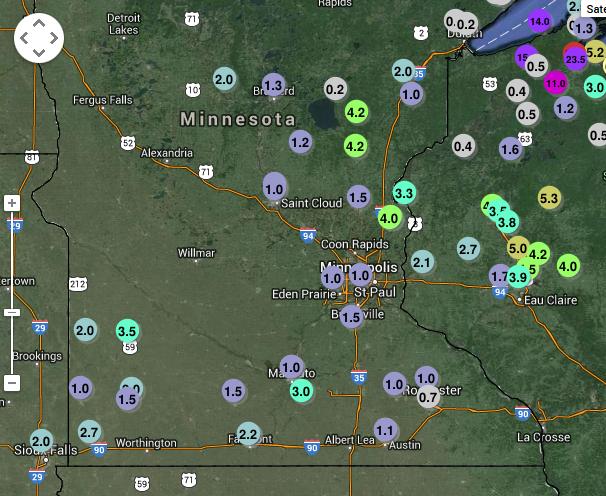
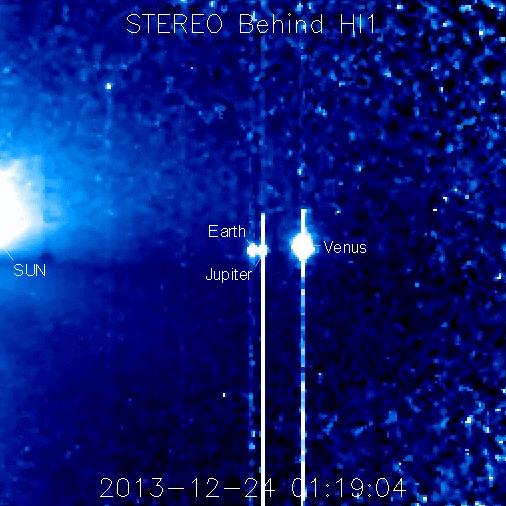



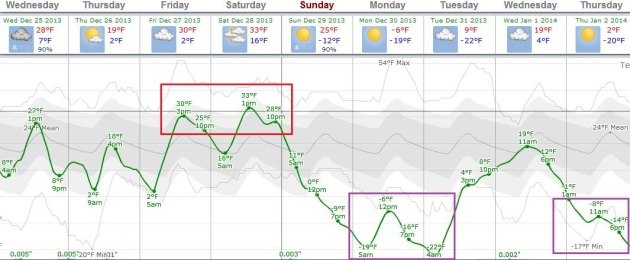


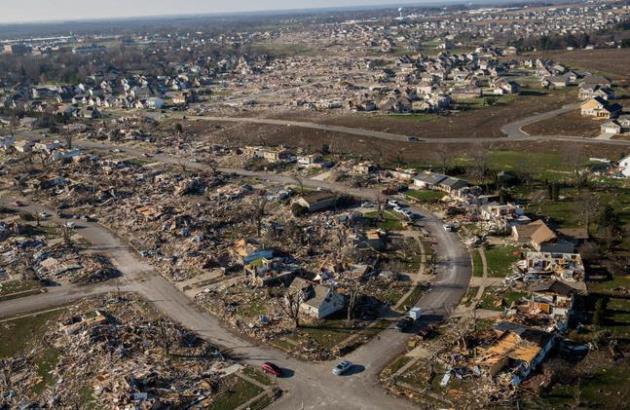

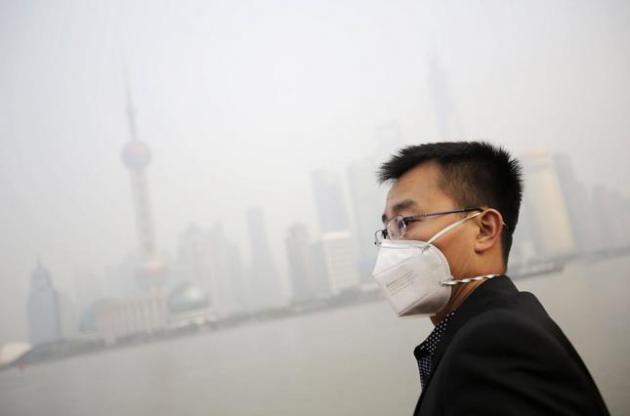


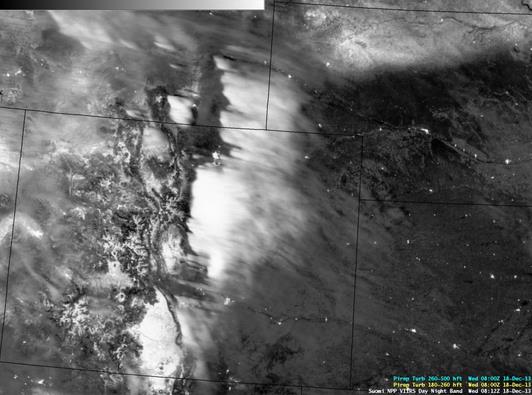


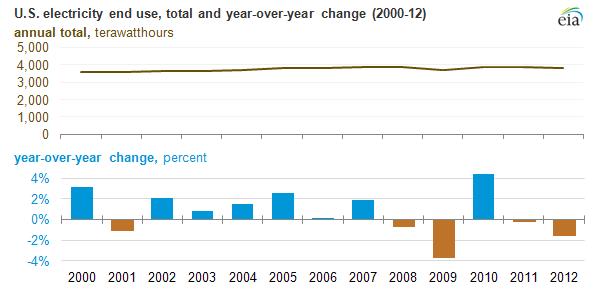

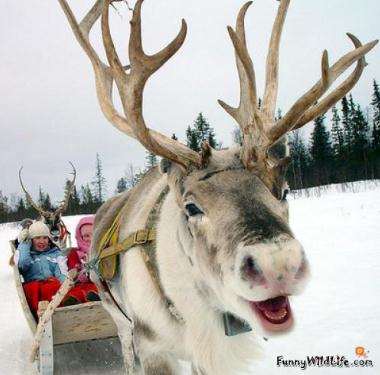
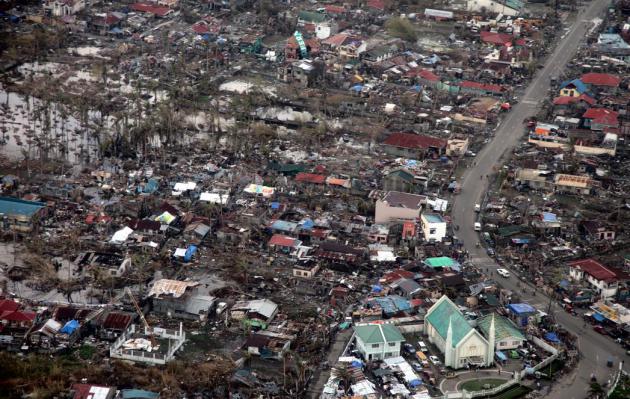

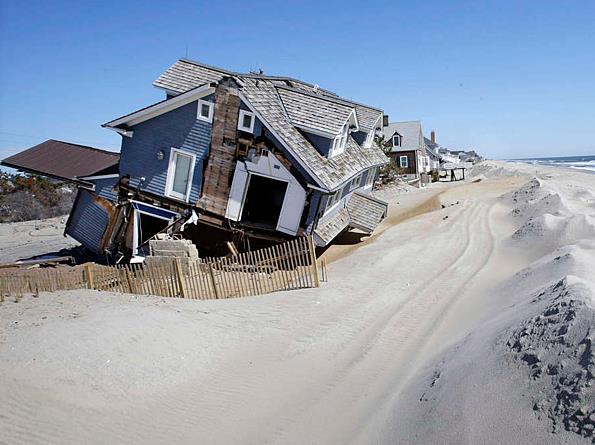
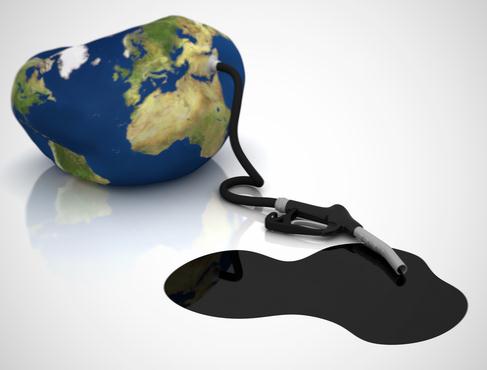

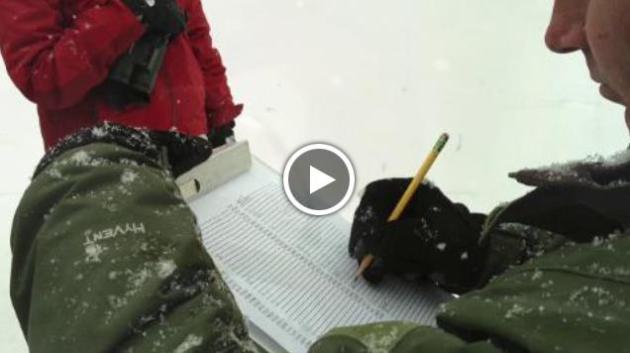


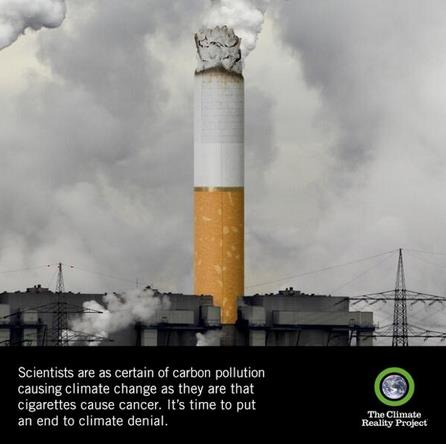
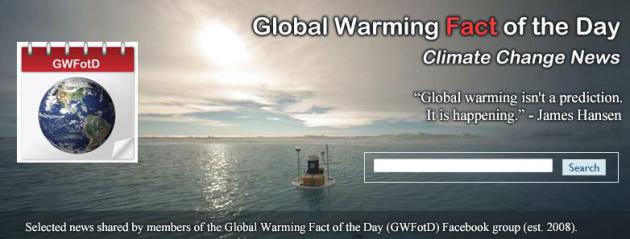
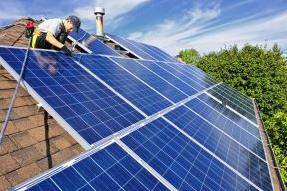
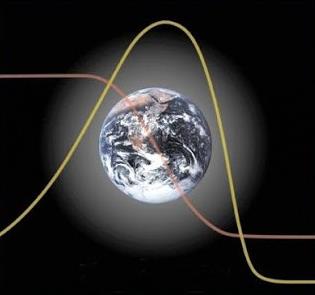
No comments:
Post a Comment